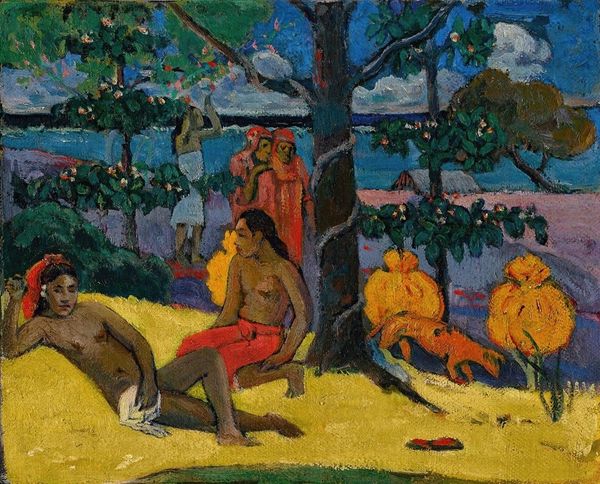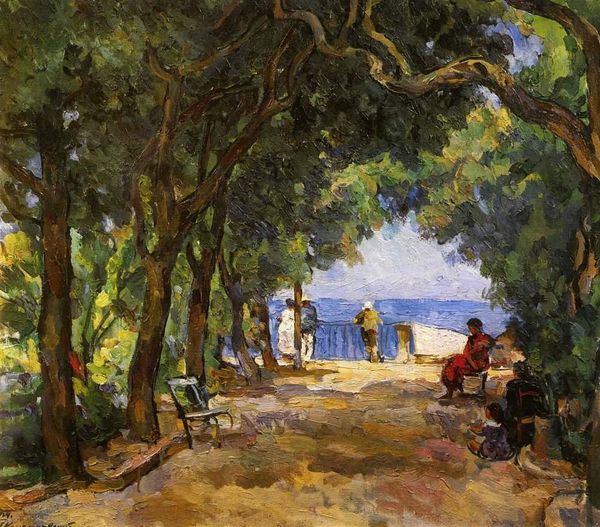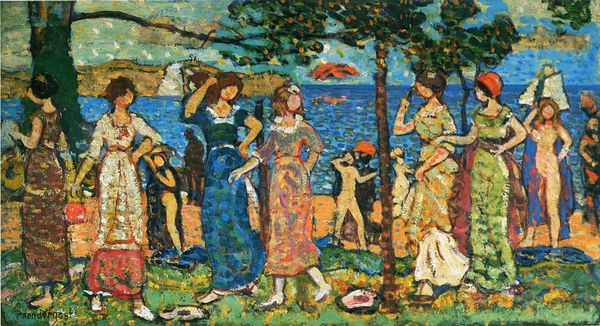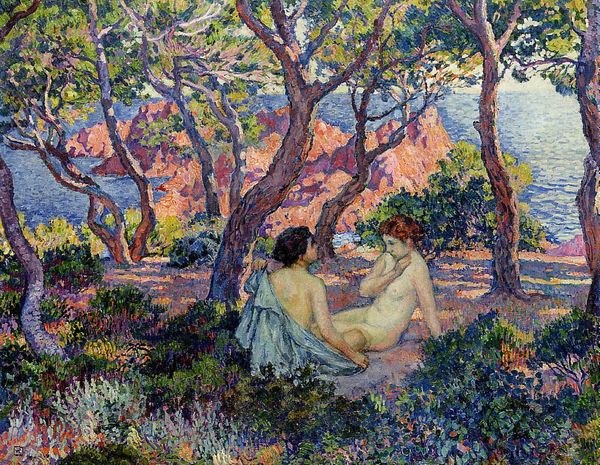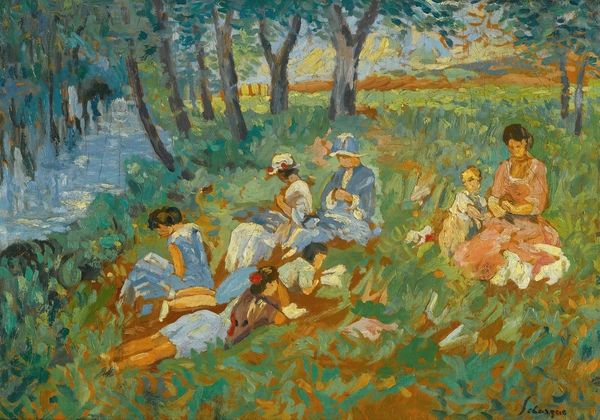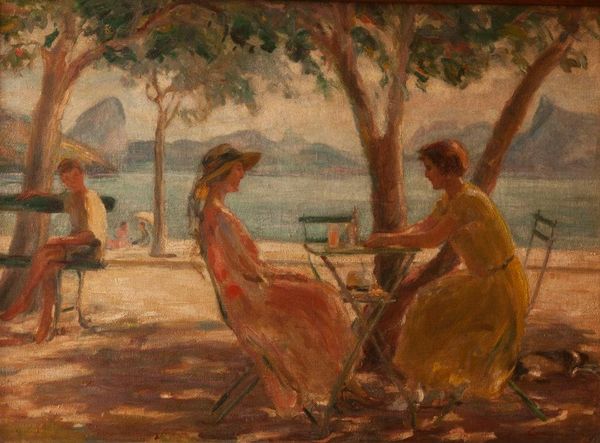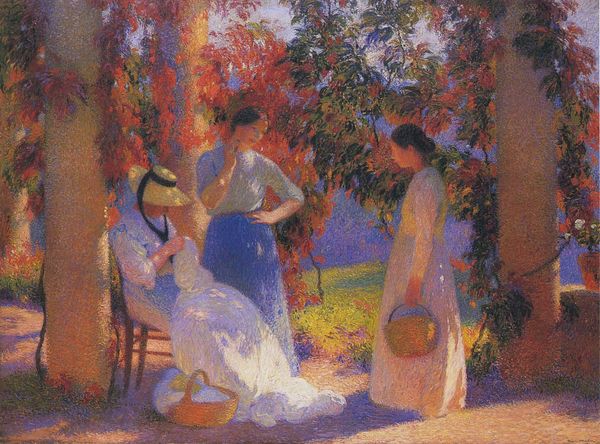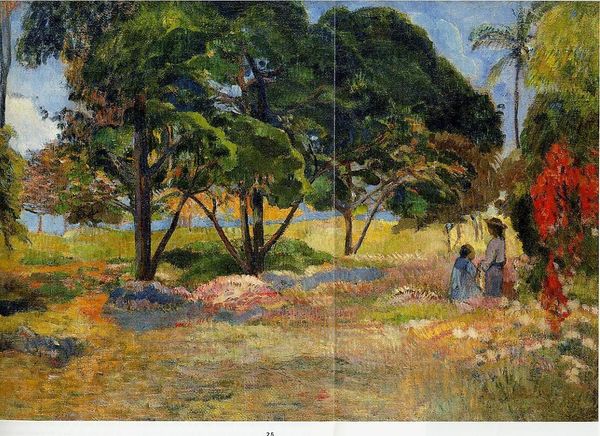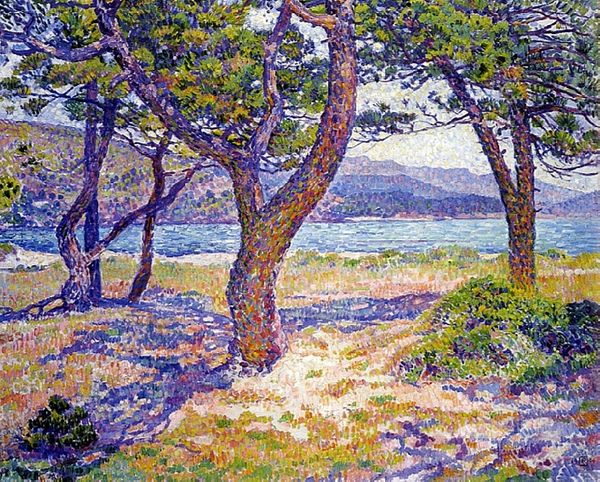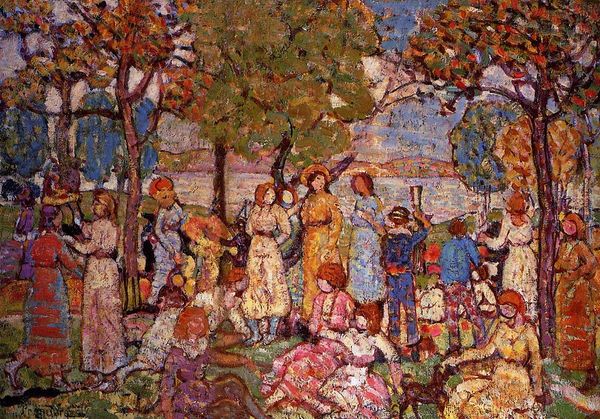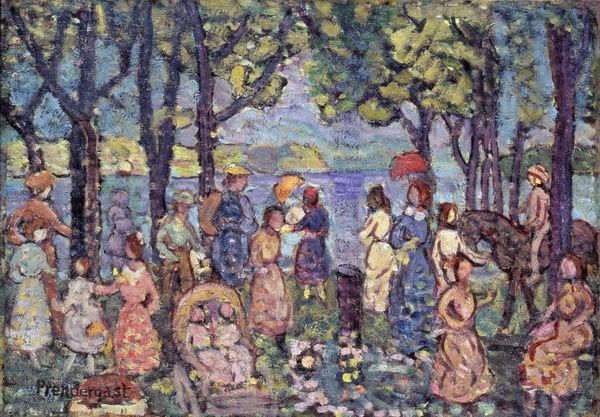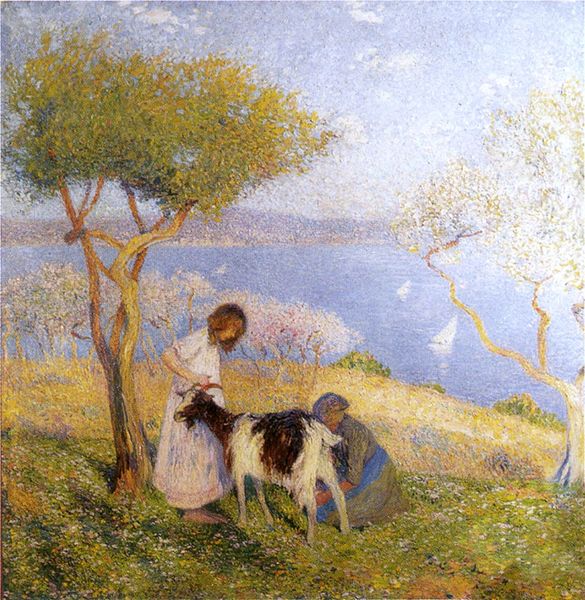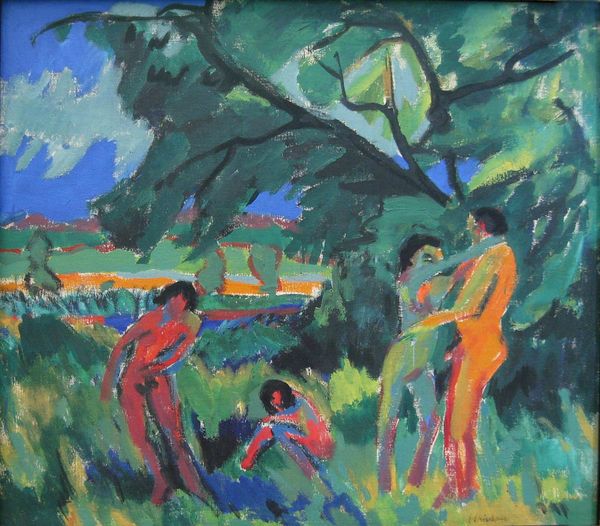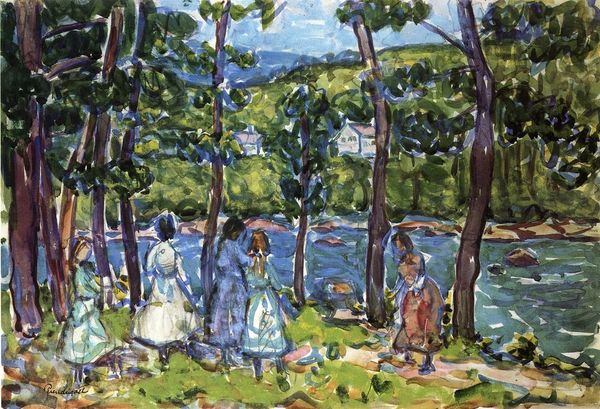
#
tree
#
abstract painting
#
impressionist landscape
#
oil painting
#
female-nude
#
fluid art
#
acrylic on canvas
#
animal portrait
#
naive art
#
animal drawing portrait
#
surrealist
#
expressionist
Dimensions: 115.9 x 89.8 cm
Copyright: Public domain
Editor: This is "Bathers under the Pines by the Sea" painted by Theo van Rysselberghe in 1926. It’s an oil painting depicting figures resting under the shade of pine trees near the sea. It strikes me as very classical in its subject matter, but also quite modern in its loose brushstrokes and vibrant colour. What do you see when you look at this work? Curator: Primarily, I observe the composition. The artist skillfully balances the verticality of the pines against the horizontality of the sea and shore. Notice how the figures are arranged in a pyramidal shape, anchoring the foreground. Van Rysselberghe masterfully employs color to create depth and light, doesn’t he? Editor: Absolutely, the dappled sunlight effect is really beautiful, almost pointillist. I'm intrigued by how the figures are positioned, they're very close, but there is no real interaction between them. Is that deliberate do you think, to highlight a mood or atmosphere? Curator: Precisely! The arrangement accentuates the geometry and color rather than storytelling. The texture and play of light seem like primary concerns, and so attention to detail takes a backseat to broader effects of colour and representation. How else might we account for that formal tension? Editor: It feels like a conscious decision to move away from a realistic depiction. It focuses more on capturing the sensory experience of being there, a very "Impressionistic" approach? Curator: Indeed! By emphasizing formal elements over narrative, Rysselberghe directs our gaze toward the pure visuality of the scene itself. That focus allows him to show his work through his unique application of complementary colours in what some describe as divisionist brushwork. Editor: That's a fascinating approach. I hadn't considered how much the composition itself drives the interpretation. Curator: And understanding this composition deepens our appreciation. We began simply admiring color and shape, and finished identifying potential clues about the author's creative and historical background.
Comments
No comments
Be the first to comment and join the conversation on the ultimate creative platform.
